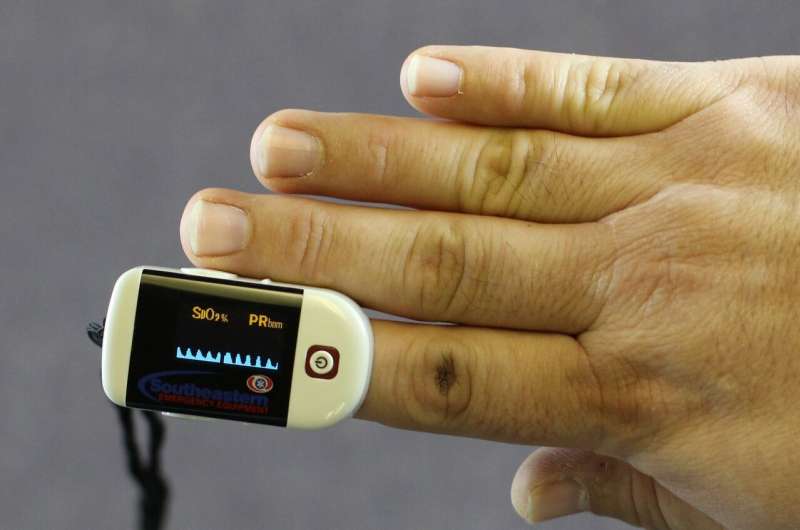Can current smartphone technology tell you when a pandemic might come calling?

Photoplethysmography (PPG) is a simple optical technique used to detect volumetric changes in peripheral blood circulation. It's used in smart watches, for example, to monitor pulse and heart rate, but PPG biosensors are also found in millions of smartphones, but without any current clinical applications.
In a study published online in the February 2021 issue of Chest, researchers at University of California San Diego School of Medicine, with industry collaborators, found that already embedded PPG in smartphones, in tandem with application software, could be used for remote clinical pulse oximetry to manage chronic cardiopulmonary disease and perhaps initial treatment and monitoring of persons affected in respiratory viral pandemics, such as COVID-19.
"Pulse oximetry monitoring plays an important role in managing pulmonary diseases, especially during pandemics or epidemics of respiratory viral infections, such as COVID-19 and influenza," said the study's first author Sara H. Browne, MD, an associate professor in the UC San Diego School of Medicine and an infectious disease specialist.
Oxygen saturation is a valuable component of the clinical evaluation used to differentiate those that require close monitoring. In circumstances of home quarantine, remote clinical pulse oximetry allows patients to objectively report oxygen saturation and heart rate in addition to their symptoms. Smartphone sensors with apps could facilitate access to these measurements, but to be utilized clinicians must know that these measurements are accurate and reliable.
Browne also noted there are health equity aspects in remote monitoring.
"Smartphones with sensors and apps could significantly enhance remote monitoring due to their ubiquity, and don't require patients to have additional expensive gadgets."
PPG sensors measure distention or enlargement of arteries and other vessels under the skin as blood pulses through them by detecting differences in light absorbed or reflected back to a pair of light-emitting diodes in the device. The painless, non-invasive technology is called pulse oximetry and is commonly used in hospitals and clinics, often to evaluate oxygen levels in patients' blood.
In their study, researchers recruited 10 volunteers (three Caucasian, three Black and four Asian), each placed an index finger over a smartphone sensor system with an app designed to clinically interpret the resulting optical data. The volunteers then breathed a mixture of gases with reduced levels of oxygen, sequentially declining to reach stable arterial oxygen saturations between 70 percent and 100 percent. They found that the smartphone measurements of blood-oxygen levels corresponded with other Food and Drug Administration-approved clinical tools used for this purpose.
Then, using the same smartphone, the researchers analyzed more than 2,200 readings taken simultaneously from smartphone pulse oximetry and in-hospital Welch-Allyn instruments in 320 study participants, ages 18 to 89, and representing a broad range of racial and ethnic backgrounds. They found that the smartphone readings had equivalent measurement accuracy and precision to the expensive FDA-approved hospital instruments.
More information: Sara H. Browne et al. Smartphone Biosensor With App Meets FDA/ISO Standards for Clinical Pulse Oximetry and Can Be Reliably Used by a Wide Range of Patients, Chest (2020). DOI: 10.1016/j.chest.2020.08.2104




















